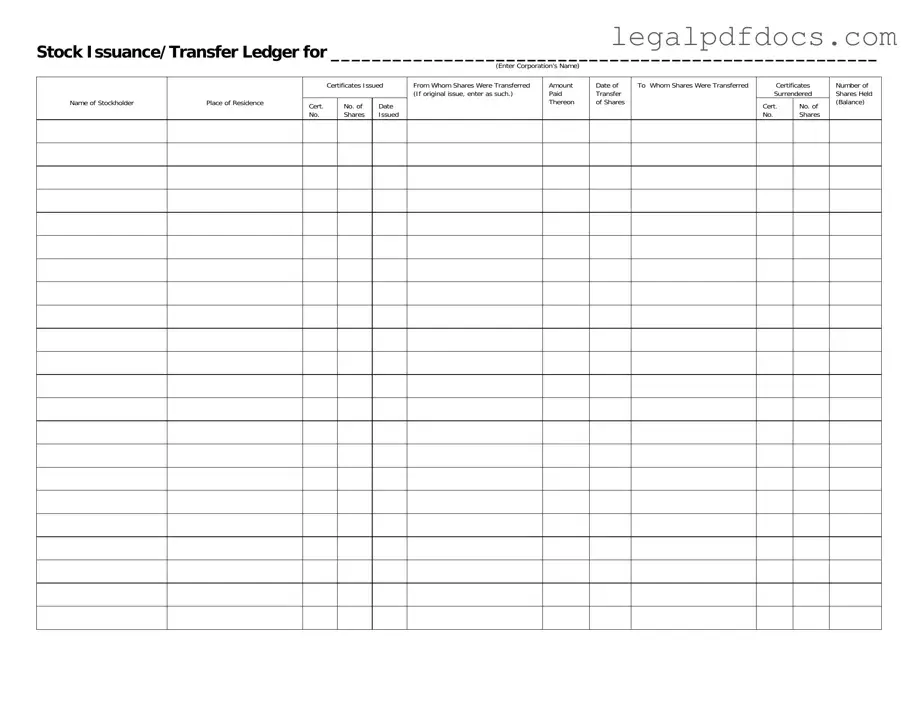The Stock Transfer Ledger form serves as a crucial document for corporations managing their stock issuance and transfers. This form captures essential information about the corporation's name and the stockholder involved in the transaction. It records the details of the certificates issued, including their unique certificate numbers and the dates on which shares were issued. Additionally, the form outlines the origins of the shares, indicating from whom the shares were transferred or noting if it is an original issue. Important financial details, such as the amount paid for the shares, are also documented. The date of transfer is a key element, as it marks the official change of ownership. Furthermore, the form includes information about the recipient of the shares, ensuring clarity in ownership records. Certificates surrendered during the transfer process are noted, along with the corresponding certificate numbers. Finally, the ledger provides a summary of the number of shares held after the transfer, offering a clear picture of the stockholder's current balance. This comprehensive structure ensures that all pertinent details are systematically recorded, facilitating transparency and accuracy in stock management.
